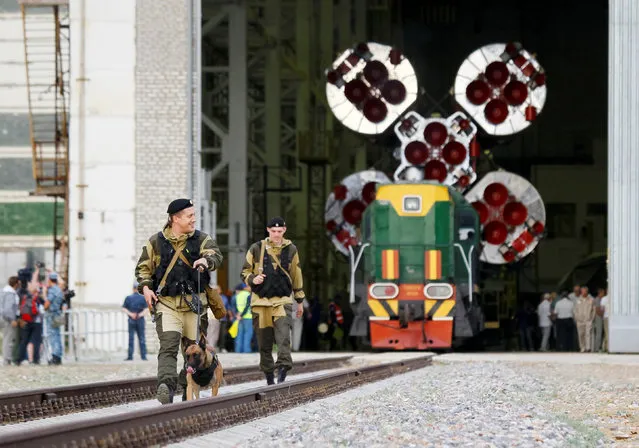
Police officers with a sniffer dog check a railway as the Soyuz MS spacecraft for the next International Space Station (ISS) crew of Kate Rubins of the U.S., Anatoly Ivanishin of Russia and Takuya Onishi of Japan is ready to be transported from an assembling hangar to the launchpad ahead of its launch scheduled on July 7, at the Baikonur cosmodrome in Kazakhstan July 4, 2016. The flight, initially scheduled for June 24, was delayed due to spacecraft software glitches that could have impacted the docking with the ISS. The mission received designation Soyuz MS-01 as it is the first flight of the upgraded Soyuz vehicle. As usual, the spacecraft will be launched atop Russia’s workhorse Soyuz-FG booster, designed for manned missions. The journey to the ISS will take more than two days, during which the crew is expected to test modified systems of the spacecraft. (Photo by Shamil Zhumatov/Reuters)
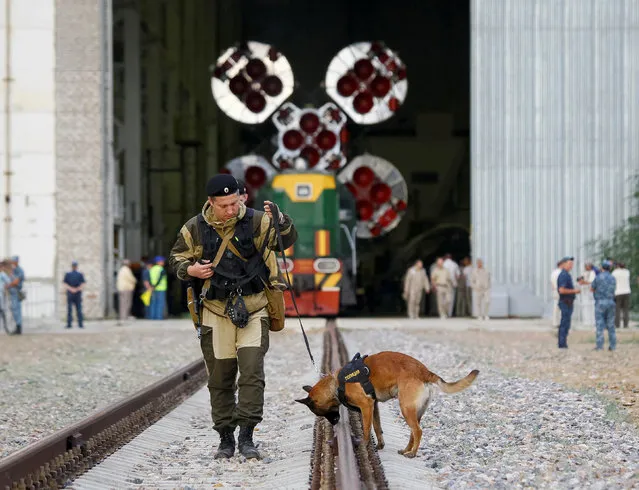
Police officers with a sniffer dog check a railway as the Soyuz MS spacecraft for the next International Space Station (ISS) crew of Kate Rubins of the U.S., Anatoly Ivanishin of Russia and Takuya Onishi of Japan is ready to be transported from an assembling hangar to the launchpad ahead of its launch scheduled on July 7, at the Baikonur cosmodrome in Kazakhstan July 4, 2016. (Photo by Shamil Zhumatov/Reuters)
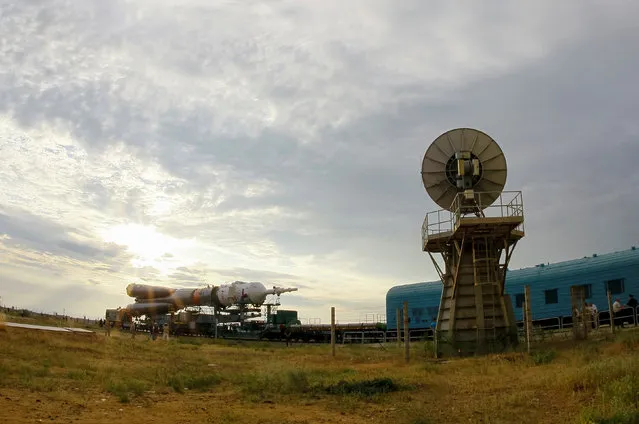
The Soyuz MS spacecraft for the next International Space Station (ISS) crew of Kate Rubins of the U.S., Anatoly Ivanishin of Russia and Takuya Onishi of Japan is transported from an assembling hangar to the launchpad ahead of its launch scheduled on July 7, at the Baikonur cosmodrome in Kazakhstan July 4, 2016. (Photo by Shamil Zhumatov/Reuters)
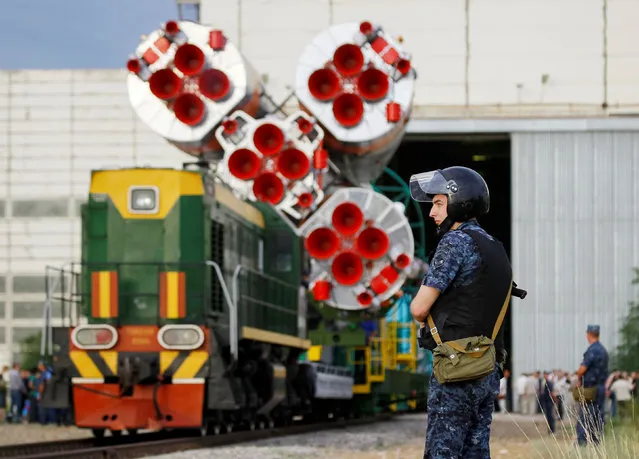
A police officer secures an area as the Soyuz MS spacecraft for the next International Space Station (ISS) crew of Kate Rubins of the U.S., Anatoly Ivanishin of Russia and Takuya Onishi of Japan is ready to be transported from an assembling hangar to the launchpad ahead of its launch scheduled on July 7, at the Baikonur cosmodrome in Kazakhstan July 4, 2016. (Photo by Shamil Zhumatov/Reuters)
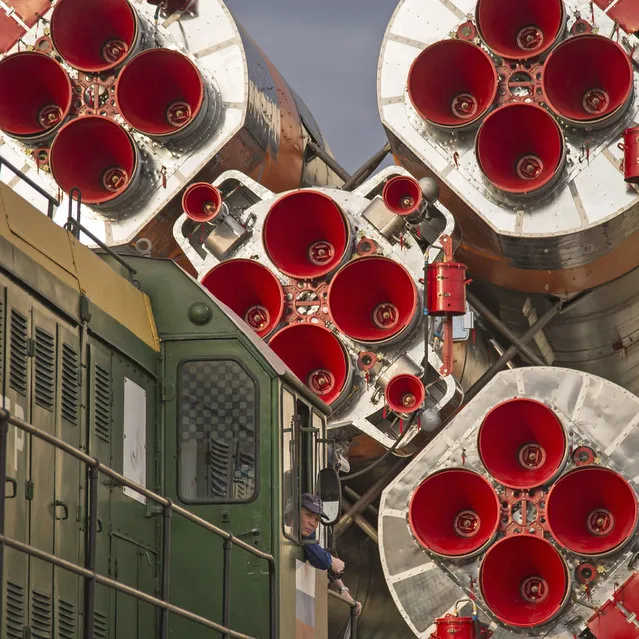
The Soyuz MS-01 spacecraft is rolled out by train to the launch pad at the Baikonur Cosmodrome, Kazakhstan, 04 July 2016. NASA astronaut Kate Rubins, cosmonaut Anatoly Ivanishin of the Russian space agency Roscosmos, and astronaut Takuya Onishi of the Japan Aerospace Exploration Agency (JAXA) will launch from the Baikonur Cosmodrome in Kazakhstan the morning of 07 July Kazakh time. All three will spend approximately four months on the orbital complex, returning to Earth in October. (Photo by Bill Ingalls/EPA/NASA)
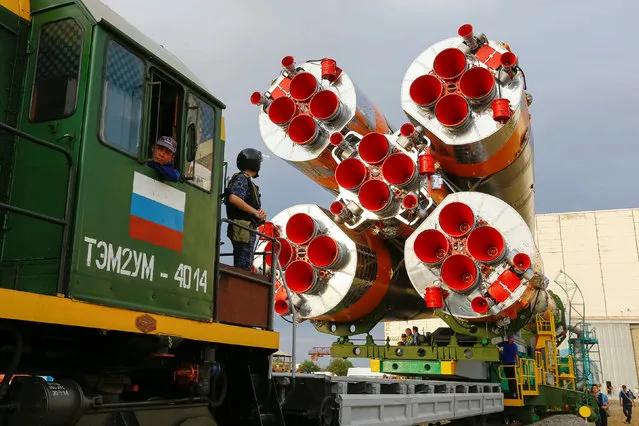
The Soyuz MS spacecraft for the next International Space Station (ISS) crew of Kate Rubins of the U.S., Anatoly Ivanishin of Russia and Takuya Onishi of Japan is transported from an assembling hangar to the launchpad ahead of its launch scheduled on July 7, at the Baikonur cosmodrome in Kazakhstan July 4, 2016. (Photo by Shamil Zhumatov/Reuters)
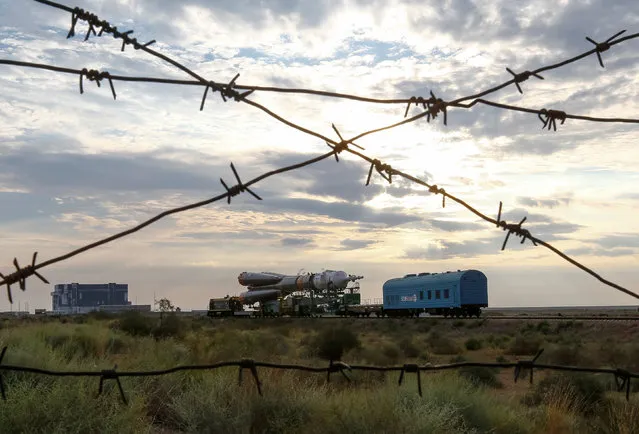
The Soyuz MS spacecraft for the next International Space Station (ISS) crew of Kate Rubins of the U.S., Anatoly Ivanishin of Russia and Takuya Onishi of Japan is transported from an assembling hangar to the launchpad ahead of its launch scheduled on July 7, at the Baikonur cosmodrome in Kazakhstan July 4, 2016. (Photo by Shamil Zhumatov/Reuters)

The Soyuz MS spacecraft for the next International Space Station (ISS) crew of Kate Rubins of the U.S., Anatoly Ivanishin of Russia and Takuya Onishi of Japan is transported from an assembling hangar to the launchpad ahead of its launch scheduled on July 7, at the Baikonur cosmodrome in Kazakhstan July 4, 2016. (Photo by Shamil Zhumatov/Reuters)

A policeman stands guard as Russia's Soyuz-FG booster rocket with the Soyuz MS space ship that will carry new crew to the International Space Station (ISS) is transported from its hangar to the launch pad at the Russian leased Baikonur cosmodrome, Kazakhstan, Monday, July 4, 2016. The start of the new Soyuz mission is scheduled on Thursday, July 7. The Russian rocket will carry U.S. astronaut Kate Rubins, Russian cosmonaut Anatoly Ivanishin and Japanese astronaut Takuya Onishi. (Photo by Dmitri Lovetsky/AP Photo)
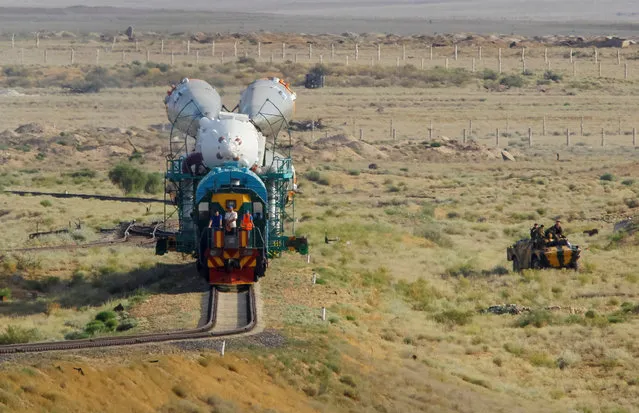
The Soyuz MS spacecraft for the next International Space Station (ISS) crew of Kate Rubins of the U.S., Anatoly Ivanishin of Russia and Takuya Onishi of Japan is transported from an assembling hangar to the launchpad ahead of its launch scheduled on July 7, at the Baikonur cosmodrome in Kazakhstan July 4, 2016. (Photo by Shamil Zhumatov/Reuters)
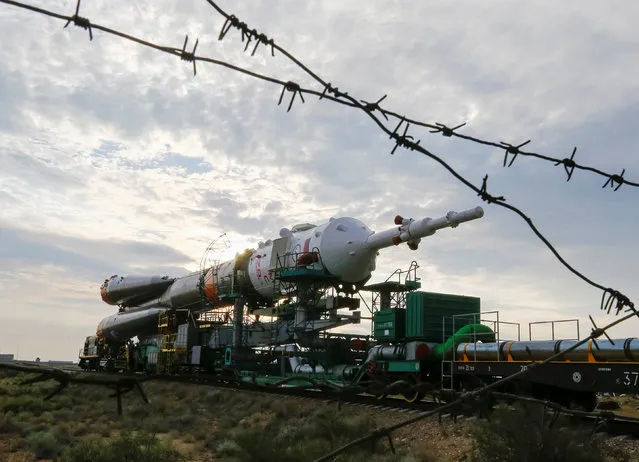
The Soyuz MS spacecraft for the next International Space Station (ISS) crew of Kate Rubins of the U.S., Anatoly Ivanishin of Russia and Takuya Onishi of Japan is transported from an assembling hangar to the launchpad ahead of its launch scheduled on July 7, at the Baikonur cosmodrome in Kazakhstan July 4, 2016. (Photo by Shamil Zhumatov/Reuters)
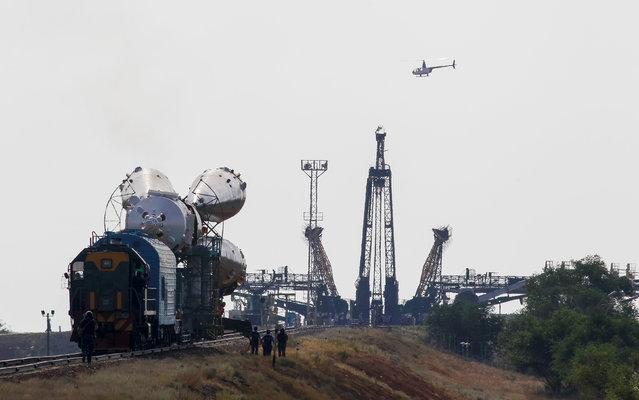
A police helicopter flies by the Soyuz MS spacecraft for the next International Space Station (ISS) crew of Kate Rubins of the U.S., Anatoly Ivanishin of Russia and Takuya Onishi of Japan as it is transported from an assembling hangar to the launchpad ahead of its launch scheduled on July 7, at the Baikonur cosmodrome in Kazakhstan July 4, 2016. (Photo by Shamil Zhumatov/Reuters)
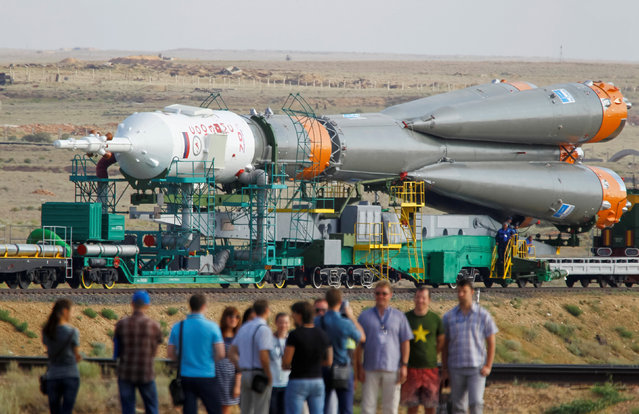
The Soyuz MS spacecraft for the next International Space Station (ISS) crew of Kate Rubins of the U.S., Anatoly Ivanishin of Russia and Takuya Onishi of Japan is transported from an assembling hangar to the launchpad ahead of its launch scheduled on July 7, at the Baikonur cosmodrome in Kazakhstan July 4, 2016. (Photo by Shamil Zhumatov/Reuters)
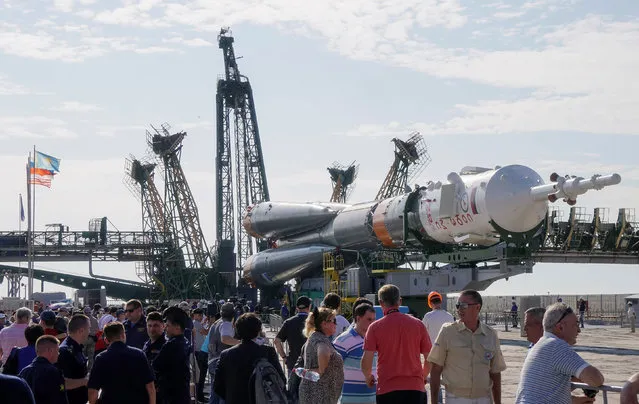
The Soyuz MS spacecraft for the next International Space Station (ISS) crew of Kate Rubins of the U.S., Anatoly Ivanishin of Russia and Takuya Onishi of Japan is ready to be set at the launchpad ahead of its launch scheduled on July 7, at the Baikonur cosmodrome in Kazakhstan July 4, 2016. (Photo by Shamil Zhumatov/Reuters)
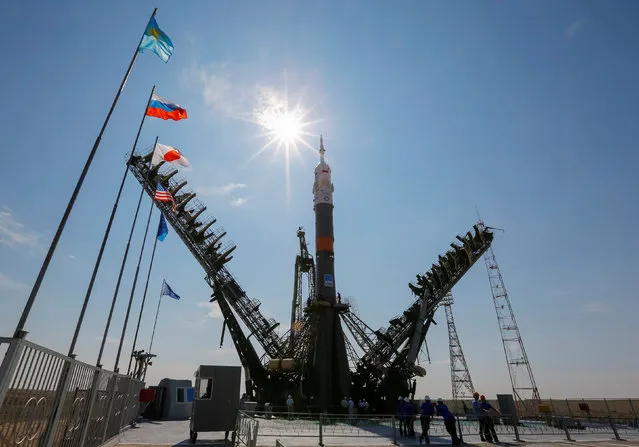
The Soyuz MS spacecraft for the next International Space Station (ISS) crew of Kate Rubins of the U.S., Anatoly Ivanishin of Russia and Takuya Onishi of Japan is set at the launchpad ahead of its launch scheduled on July 7, at the Baikonur cosmodrome in Kazakhstan July 4, 2016. (Photo by Shamil Zhumatov/Reuters)
06 Jul 2016 16:24:00,
post received
0 comments
